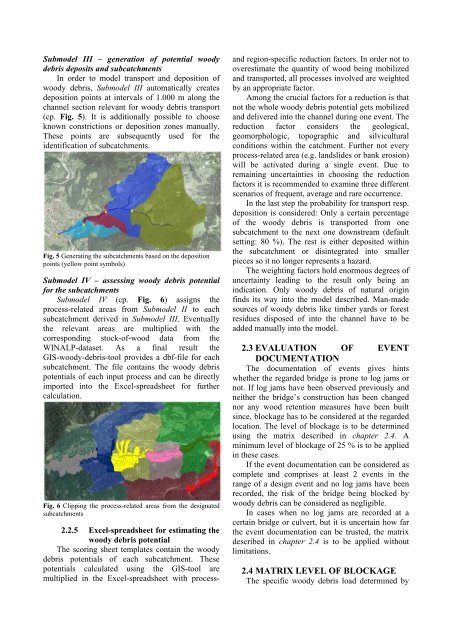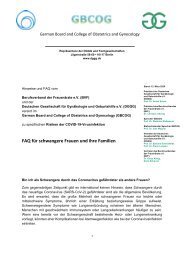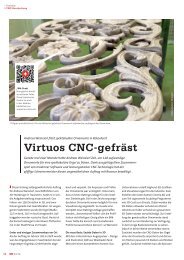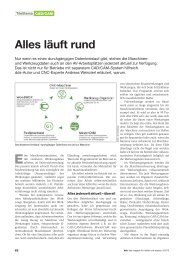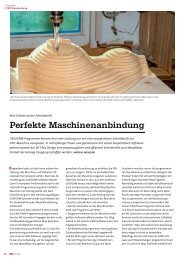Assessing torrential endangered areas in Bavaria – consideration of log jams at culverts and bridges
According to the Bavarian Water Act there is an obligation for the water management authorities to determine torrential endangered areas. In a legal sense these areas are primarily potential flood areas however under consideration of typical torrential characteristics. Especially the involvement of solids in the process has to be regarded. Therefore a standardized modular approach to assess torrential hazards was developed at the Bavarian Environment Agency.
According to the Bavarian Water Act there is an obligation for the water management authorities to determine torrential endangered areas. In a legal sense these areas are primarily potential flood areas however under consideration of typical torrential characteristics. Especially the involvement of solids in the process has to be regarded. Therefore a standardized modular approach to assess torrential hazards was developed at the Bavarian Environment Agency.
Create successful ePaper yourself
Turn your PDF publications into a flip-book with our unique Google optimized e-Paper software.
Submodel III <strong>–</strong> gener<strong>at</strong>ion <strong>of</strong> potential woody<br />
debris deposits <strong>and</strong> subc<strong>at</strong>chments<br />
In order to model transport <strong>and</strong> deposition <strong>of</strong><br />
woody debris, Submodel III autom<strong>at</strong>ically cre<strong>at</strong>es<br />
deposition po<strong>in</strong>ts <strong>at</strong> <strong>in</strong>tervals <strong>of</strong> 1.000 m along the<br />
channel section relevant for woody debris transport<br />
(cp. Fig. 5). It is additionally possible to choose<br />
known constrictions or deposition zones manually.<br />
These po<strong>in</strong>ts are subsequently used for the<br />
identific<strong>at</strong>ion <strong>of</strong> subc<strong>at</strong>chments.<br />
Fig. 5 Gener<strong>at</strong><strong>in</strong>g the subc<strong>at</strong>chments based on the deposition<br />
po<strong>in</strong>ts (yellow po<strong>in</strong>t symbols)<br />
Submodel IV <strong>–</strong> assess<strong>in</strong>g woody debris potential<br />
for the subc<strong>at</strong>chments<br />
Submodel IV (cp. Fig. 6) assigns the<br />
process-rel<strong>at</strong>ed <strong>areas</strong> from Submodel II to each<br />
subc<strong>at</strong>chment derived <strong>in</strong> Submodel III. Eventually<br />
the relevant <strong>areas</strong> are multiplied with the<br />
correspond<strong>in</strong>g stock-<strong>of</strong>-wood d<strong>at</strong>a from the<br />
WINALP-d<strong>at</strong>aset. As a f<strong>in</strong>al result the<br />
GIS-woody-debris-tool provides a dbf-file for each<br />
subc<strong>at</strong>chment. The file conta<strong>in</strong>s the woody debris<br />
potentials <strong>of</strong> each <strong>in</strong>put process <strong>and</strong> can be directly<br />
imported <strong>in</strong>to the Excel-spreadsheet for further<br />
calcul<strong>at</strong>ion.<br />
Fig. 6 Clipp<strong>in</strong>g the process-rel<strong>at</strong>ed <strong>areas</strong> from the design<strong>at</strong>ed<br />
subc<strong>at</strong>chments<br />
2.2.5 Excel-spreadsheet for estim<strong>at</strong><strong>in</strong>g the<br />
woody debris potential<br />
The scor<strong>in</strong>g sheet templ<strong>at</strong>es conta<strong>in</strong> the woody<br />
debris potentials <strong>of</strong> each subc<strong>at</strong>chment. These<br />
potentials calcul<strong>at</strong>ed us<strong>in</strong>g the GIS-tool are<br />
multiplied <strong>in</strong> the Excel-spreadsheet with process-<br />
<strong>and</strong> region-specific reduction factors. In order not to<br />
overestim<strong>at</strong>e the quantity <strong>of</strong> wood be<strong>in</strong>g mobilized<br />
<strong>and</strong> transported, all processes <strong>in</strong>volved are weighted<br />
by an appropri<strong>at</strong>e factor.<br />
Among the crucial factors for a reduction is th<strong>at</strong><br />
not the whole woody debris potential gets mobilized<br />
<strong>and</strong> delivered <strong>in</strong>to the channel dur<strong>in</strong>g one event. The<br />
reduction factor considers the geo<strong>log</strong>ical,<br />
geomorpho<strong>log</strong>ic, topographic <strong>and</strong> silvicultural<br />
conditions with<strong>in</strong> the c<strong>at</strong>chment. Further not every<br />
process-rel<strong>at</strong>ed area (e.g. l<strong>and</strong>slides or bank erosion)<br />
will be activ<strong>at</strong>ed dur<strong>in</strong>g a s<strong>in</strong>gle event. Due to<br />
rema<strong>in</strong><strong>in</strong>g uncerta<strong>in</strong>ties <strong>in</strong> choos<strong>in</strong>g the reduction<br />
factors it is recommended to exam<strong>in</strong>e three different<br />
scenarios <strong>of</strong> frequent, average <strong>and</strong> rare occurrence.<br />
In the last step the probability for transport resp.<br />
deposition is considered: Only a certa<strong>in</strong> percentage<br />
<strong>of</strong> the woody debris is transported from one<br />
subc<strong>at</strong>chment to the next one downstream (default<br />
sett<strong>in</strong>g: 80 %). The rest is either deposited with<strong>in</strong><br />
the subc<strong>at</strong>chment or dis<strong>in</strong>tegr<strong>at</strong>ed <strong>in</strong>to smaller<br />
pieces so it no longer represents a hazard.<br />
The weight<strong>in</strong>g factors hold enormous degrees <strong>of</strong><br />
uncerta<strong>in</strong>ty lead<strong>in</strong>g to the result only be<strong>in</strong>g an<br />
<strong>in</strong>dic<strong>at</strong>ion. Only woody debris <strong>of</strong> n<strong>at</strong>ural orig<strong>in</strong><br />
f<strong>in</strong>ds its way <strong>in</strong>to the model described. Man-made<br />
sources <strong>of</strong> woody debris like timber yards or forest<br />
residues disposed <strong>of</strong> <strong>in</strong>to the channel have to be<br />
added manually <strong>in</strong>to the model.<br />
2.3 EVALUATION OF EVENT<br />
DOCUMENTATION<br />
The document<strong>at</strong>ion <strong>of</strong> events gives h<strong>in</strong>ts<br />
whether the regarded bridge is prone to <strong>log</strong> <strong>jams</strong> or<br />
not. If <strong>log</strong> <strong>jams</strong> have been observed previously <strong>and</strong><br />
neither the bridge’s construction has been changed<br />
nor any wood retention measures have been built<br />
s<strong>in</strong>ce, blockage has to be considered <strong>at</strong> the regarded<br />
loc<strong>at</strong>ion. The level <strong>of</strong> blockage is to be determ<strong>in</strong>ed<br />
us<strong>in</strong>g the m<strong>at</strong>rix described <strong>in</strong> chapter 2.4. A<br />
m<strong>in</strong>imum level <strong>of</strong> blockage <strong>of</strong> 25 % is to be applied<br />
<strong>in</strong> these cases.<br />
If the event document<strong>at</strong>ion can be considered as<br />
complete <strong>and</strong> comprises <strong>at</strong> least 2 events <strong>in</strong> the<br />
range <strong>of</strong> a design event <strong>and</strong> no <strong>log</strong> <strong>jams</strong> have been<br />
recorded, the risk <strong>of</strong> the bridge be<strong>in</strong>g blocked by<br />
woody debris can be considered as negligible.<br />
In cases when no <strong>log</strong> <strong>jams</strong> are recorded <strong>at</strong> a<br />
certa<strong>in</strong> bridge or culvert, but it is uncerta<strong>in</strong> how far<br />
the event document<strong>at</strong>ion can be trusted, the m<strong>at</strong>rix<br />
described <strong>in</strong> chapter 2.4 is to be applied without<br />
limit<strong>at</strong>ions.<br />
2.4 MATRIX LEVEL OF BLOCKAGE<br />
The specific woody debris load determ<strong>in</strong>ed by


